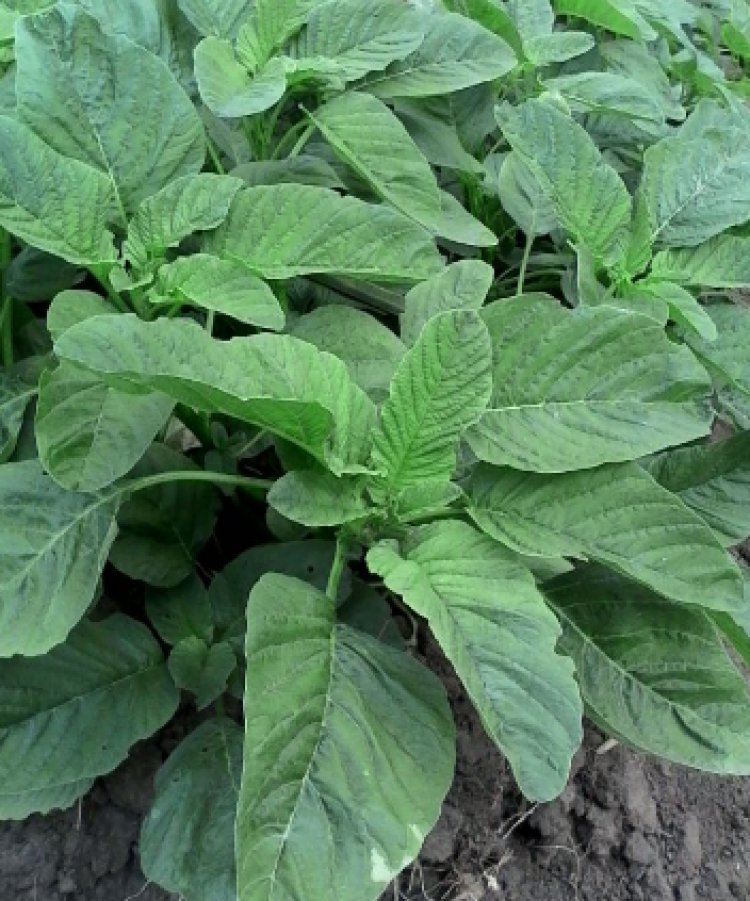How To Grow Amaranthus From Seed
Amaranth has branched flower stalks with little seeds that range in color from white to gold, pink to lustrous black, and green or red leaves.

The plant's eye-catching look makes it the perfect crop for edible landscapes. Amaranth has a wide range of hues, with 60–70 different species that thrive all year long.
You can cultivate a wide variety of amaranths, from classic green vegetables to cultivars that yield harvests in your kitchen garden.
The names Mchicha (Swahili), Terere (Kikuyu), Lidodo (Luhya), and Ododo (Luo) are all used to refer to amaranthus or pigweed. Although there are many different species of amaranthus, only a small percentage of them are cultivated varieties, and the majority are regarded as weedy species and are therefore infrequently conserved.
The green leafy vegetable can be eaten boiled, steamed, stir-fried, as soup, stewed or pureed. Their seeds can also be dried and planted to bring forth more.
Unlike other leafy crops, amaranth may be cultivated all year round and does well in hot, muggy conditions. Amaranth grows better when exposed to more light. Amaranth should be grown in full sun to avoid lanky, feeble growth therefore choose a location that receives 5 to 6 hours of sunlight per day.
How to plant amaranth seeds from scratch in your kitchen garden

Amaranth plant grows nicely in well-drained soil. Choose a location that provides for optimum airflow and drainage. The plant just needs an inch of water each week or less on average. Root rot or fungal illnesses could potentially result from overwatering your plant. Amaranth is a low-maintenance, simple-to-grow plant. Once established, it requires little maintenance and care. Making your task simple, it naturally resists the majority of pests and diseases.
Amaranth seeds can be sworn directly to the ground or placed first in a seedbed for them to develop into seedlings and be transplanted later.
If you want to grow amaranth seeds directly to the ground, scatter the seeds 4 inches apart and cover them with a thin layer of dirt. The seeds will begin to sprout in 10 to 14 days. The plants should be spaced 10 to 18 inches apart once they begin to sprout.

How to transplant amaranth seedlings.
If you intend to transplant the seeds, you can do so once the seedlings are about 2-3 inches tall and have grown roots in their ultimate location.
Choose a sunny location and space the seedlings according to the expected sizes of the various types. When fully grown, certain amaranth variants can reach heights of up to 7-8 feet, although the leafy varieties only grow to a height of two to three feet.
Seeds should be sown around 4 inches apart on the ground if you are planting right there. Cover the seeds with a thin layer of dirt. The seeds will begin to sprout in 10 to 14 days. Plants should be spaced 10 to 18 inches apart once they begin to sprout.
Harvesting of amaranth leaves

Amaranth may be harvested whenever it is ready, which is the finest thing about cultivating it. The plant's smaller leaves are tender, and its larger leaves are flavorful. Keep the crown and leaves surrounding the top intact when collecting the leaves to encourage further growth. Amaranth can be harvested throughout its growing season. It works well as a spinach and kale replacement, with their high calcium content, delicate leaves can be used to make soup or salads.
Harvesting of amaranth seeds

Allow the plant to reach full maturity and blossom before harvesting the seeds. Cut the flowers off at the tip before they begin to turn brown, then put them in a bag to dry. Using a cloth, separate the seeds from the flowers. Rinse the dried seeds and store the grains. The dried seeds can be used to grow amaranth from scratch the next time you are planting them.a


























